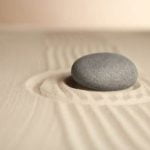Feng Shui, an ancient Chinese practice rooted in the belief of harmonizing individuals with their surroundings, has gained popularity for its positive impact on one’s well-being. One essential aspect of Feng Shui is creating a balanced and harmonious environment, especially in key areas like the bedroom.
By incorporating the principles of Feng Shui into your bedroom layout, you can enhance the overall energy flow and promote better sleep quality and overall wellness. Utilizing a feng shui bedroom layout chart can serve as a valuable tool in achieving these objectives.
Incorporating Feng Shui into your bedroom can bring about a range of benefits that extend beyond just aesthetics. From improving sleep quality to enhancing relationships and even boosting productivity, the power of Feng Shui is truly transformative. The arrangement of furniture, colors, and decorative elements in alignment with Feng Shui principles can help create a space that feels both comfortable and energetically balanced.
The bedroom layout plays a crucial role in Feng Shui principles as it directly impacts the flow of energy (chi) within the space. Understanding how to optimize this layout using a Feng Shui bedroom chart can make all the difference in creating a harmonious environment that supports rest and relaxation.
By paying attention to specific areas such as bed placement, color choices, and clutter management, you can harness the positive energy flow within your bedroom to promote physical, emotional, and mental well-being.
Benefits of Implementing Feng Shui in Your Bedroom
Feng Shui is an ancient Chinese practice that focuses on harmonizing individuals with their environment. By applying Feng Shui principles in your bedroom, you can create a space that promotes positive energy flow and enhances overall well-being. The benefits of implementing Feng Shui in your bedroom are numerous and can significantly impact your quality of life.
Here are some key benefits of incorporating Feng Shui in your bedroom:
- Improved Sleep Quality: A well-designed Feng Shui bedroom promotes relaxation and restful sleep, helping you wake up feeling refreshed and rejuvenated.
- Enhanced Relationships: By creating a harmonious environment in your bedroom, you can cultivate better relationships with your partner or spouse.
- Increased Energy Levels: A balanced Feng Shui layout in your bedroom can boost your energy levels and vitality, leading to increased productivity and overall wellness.
In order to fully reap the benefits of Feng Shui in your bedroom, it is essential to understand the importance of the bedroom layout. This layout plays a crucial role in determining the flow of positive energy (chi) in the room. To help guide individuals in arranging their bedrooms according to Feng Shui principles, there exist resources such as the Feng Shui bedroom layout chart.
How to Use the Feng Shui Bedroom Layout Chart Effectively
- Identify key areas within your bedroom such as the bed placement, door positioning, and furniture arrangement.
- Refer to the Feng Shui bedroom layout chart to understand how each element contributes to a balanced energy flow.
- Make necessary adjustments based on the recommendations provided by the chart to create a harmonious and supportive environment.
By utilizing the guidance offered by a Feng Shui bedroom layout chart, you can tailor your sleeping space to align with specific goals such as improving relationships, enhancing health, or increasing abundance. Personalizing your bedroom layout based on these intentions allows you to harness the positive energies present in your surroundings and manifest them into reality.
Avoiding common mistakes and following practical tips for creating a balanced environment will help you achieve a peaceful sanctuary where you can relax, recharge, and thrive.
Importance of Bedroom Layout in Feng Shui
Feng Shui, an ancient Chinese practice, is focused on creating harmony and balance in living spaces by arranging furniture and decor in a way that optimizes the flow of energy, or chi. The bedroom is considered one of the most important areas in the home according to Feng Shui principles, as it is where we rest, rejuvenate, and recharge. Therefore, the layout of your bedroom can greatly influence the quality of your sleep and overall well-being.
When it comes to Feng Shui, the layout of your bedroom plays a crucial role in promoting a positive energy flow. A well-designed bedroom layout can enhance relaxation, promote good health, and improve relationships. By following the guidelines of a Feng Shui bedroom layout chart, you can create a space that not only looks aesthetically pleasing but also supports your physical and emotional needs.
Understanding the Feng Shui bedroom layout chart involves taking into consideration factors such as bed placement, color schemes, lighting, and organization. For example, according to Feng Shui principles, placing your bed in what is known as the “command position” – where you can see the door but are not directly in line with it – can help you feel safe and secure while you sleep.
Additionally, incorporating elements such as soft textures for bedding and calming colors like blues or greens can promote a sense of tranquility in your bedroom. By paying attention to these details and utilizing a feng shui bedroom layout chart effectively, you can create an environment that supports restful sleep and positive energy flow throughout the space.
Understanding the Feng Shui Bedroom Layout Chart
Feng Shui is an ancient Chinese practice that focuses on creating harmony and balance in our living spaces. One of the key aspects of Feng Shui is the layout of a room, especially the bedroom, as it is a place where we spend a significant amount of time resting and rejuvenating. Understanding the Feng Shui bedroom layout chart can help you optimize the energy flow in your bedroom for better sleep, relaxation, and overall well-being.
The Feng Shui bedroom layout chart is a tool that offers guidance on how to arrange furniture, colors, and decor in your bedroom to promote positive energy flow. By following the principles outlined in the chart, you can create an environment that supports restful sleep, promotes relaxation, and enhances your overall quality of life. Each area of the bedroom corresponds to different aspects of your life such as health, relationships, and wealth.
In the Feng Shui bedroom layout chart, each section represents a specific element or aspect that contributes to the overall energy flow in the room. For example, the placement of the bed in relation to windows and doors plays a crucial role in creating a harmonious space. By aligning your furniture according to the guidelines provided in the chart, you can improve the flow of chi (energy) in your bedroom and enhance your well-being.
| Aspect | Corresponding Area |
|---|---|
| Health | Southwest Area |
| Wealth | Southeast Area |
| Relationships | South Area |
How to Use the Feng Shui Bedroom Layout Chart Effectively
Feng Shui is an ancient Chinese practice that focuses on the flow of energy, or chi, to create harmonious environments. In the bedroom, implementing Feng Shui principles can help promote restful sleep, enhance relationships, and improve overall well-being. One key tool in utilizing Feng Shui in your bedroom is the Feng Shui bedroom layout chart. This chart serves as a guide to arranging furniture and decor in a way that optimizes the flow of positive energy.
To effectively use the Feng Shui bedroom layout chart, consider the following tips:
- Position your bed properly: According to Feng Shui principles, the bed should be placed in a commanding position, where you can see the door but are not directly in line with it. This allows you to feel safe and supported while you sleep.
- Clear clutter: Clutter can block the flow of energy in your bedroom. Use the layout chart to identify areas that need decluttering and create a more serene environment.
- Balance elements: The Feng Shui bedroom layout chart often includes guidance on balancing elements such as wood, fire, earth, metal, and water. Incorporate these elements through colors, materials, and shapes to create a harmonious space.
By following the instructions provided in the Feng Shui bedroom layout chart and incorporating these tips into your bedroom design, you can create a space that promotes relaxation, positivity, and overall well-being. Remember that personalizing your bedroom layout based on your specific goals and needs is also important when using Feng Shui principles for arrangement. Start by embracing the flow of positive energy in your bedroom through intentional design choices guided by the wisdom of Feng Shui.
Tips for Creating a Harmonious Bedroom Layout Using Feng Shui Principles
Feng Shui is an ancient Chinese practice that focuses on the flow of energy, or chi, to create harmony and balance in various aspects of one’s life, including the layout of a bedroom. By incorporating Feng Shui principles into your bedroom design, you can cultivate a space that promotes relaxation, restful sleep, and overall well-being.
Positioning of the Bed
One of the key elements in creating a harmonious bedroom layout according to Feng Shui is the proper positioning of the bed. According to Feng Shui principles, the bed should be placed in a commanding position where you can see the door but are not directly in line with it. This allows for a sense of security and stability while resting. It is also important to have a solid headboard behind the bed for support and protection.
Clutter-Free Environment
In Feng Shui, clutter is believed to disrupt the flow of energy in a space and hinder positive chi from circulating freely. To create a harmonious bedroom layout, it is essential to keep the room tidy and organized. Remove any unnecessary items from under the bed, clear out cluttered surfaces, and make sure there is ample space for energy to move around freely.
Balancing Elements
Another important aspect of creating a harmonious bedroom layout using Feng Shui principles is balancing the five elements – wood, fire, earth, metal, and water. Incorporate these elements thoughtfully through color schemes, textures, patterns, and décor pieces to ensure that no single element overwhelms the others.
This balance helps maintain equilibrium in the room and promotes positive energy flow throughout the space. By following these tips for creating a harmonious bedroom layout using Feng Shui principles, you can transform your sleeping environment into a peaceful sanctuary that supports your well-being and enhances your overall quality of life.
Common Mistakes to Avoid When Arranging Your Bedroom According to Feng Shui
When it comes to arranging your bedroom according to Feng Shui principles, it is important to be mindful of common mistakes that can disrupt the flow of positive energy in your sleeping space. By avoiding these pitfalls, you can create a harmonious environment that promotes relaxation, rejuvenation, and overall well-being.
Clutter and Disorganization
One of the most common mistakes people make when arranging their bedrooms according to Feng Shui is neglecting clutter and disorganization. Clutter not only leads to visual chaos but also blocks the flow of chi, or energy, in the room. To remedy this, it is essential to declutter your space regularly and keep items organized. By creating a clear and open environment, you allow for positive energy to circulate freely throughout the room.
Incorrect Bed Placement
Another mistake to avoid is placing your bed in direct line with the door. In Feng Shui, this is known as the “coffin position” as it exposes you to negative energy and disturbs your sense of security while sleeping. Instead, positioning your bed diagonally from the door or against a solid wall can promote a sense of safety and ensure a restful night’s sleep.
Electronics and Distractions
Having electronics such as televisions, computers, or exercise equipment in the bedroom can disrupt the peaceful energy flow necessary for quality rest. These devices emit electromagnetic fields that can interfere with your ability to relax and unwind.
To maintain a calm atmosphere conducive to sleep, consider removing these distractions from your bedroom or at least keeping them out of sight during bedtime. By prioritizing simplicity and tranquility in your bedroom layout, you can optimize the benefits of Feng Shui for better sleep quality and overall well-being.
Personalizing Your Bedroom Layout Based on Your Specific Goals and Needs
Feng Shui is an ancient Chinese practice that focuses on creating harmony and balance in one’s living space to promote positive energy flow. When it comes to designing your bedroom layout, incorporating Feng Shui principles can help you achieve a peaceful and restful environment tailored to your specific goals and needs. By personalizing your bedroom layout based on these principles, you can enhance aspects of your life such as relationships, health, or career.
One key element in personalizing your bedroom layout according to Feng Shui is understanding the Bagua map. The Bagua map is a tool used in Feng Shui to determine which areas of your room correspond to different aspects of your life, such as wealth, love, or health. By aligning the elements in your room with the corresponding areas on the Bagua map, you can create a space that supports and nourishes these aspects of your life.
For example, if you are looking to improve your relationships or love life, focusing on the southwest corner of your bedroom can help attract a partner or strengthen existing relationships. This area is associated with love and marriage in Feng Shui principles. By incorporating elements such as pairs of objects, soft lighting, or soothing colors in this area, you can create a romantic atmosphere that resonates with positive energy flow according to the Feng Shui bedroom layout chart.
| Aspect | Corresponding Area on Bagua Map |
|---|---|
| Wealth | Southeast |
| Love & Marriage | Southwest |
| Health | East |
Conclusion
In conclusion, incorporating the principles of Feng Shui into your bedroom layout can truly enhance the energy flow and create a harmonious environment for rest and relaxation. By following the guidelines provided in the Feng Shui bedroom layout chart, you can optimize the placement of furniture, colors, and decor to promote positive energy and a sense of balance in your space.
The benefits of implementing Feng Shui in your bedroom extend beyond just aesthetics, as it can also positively impact your mood, sleep quality, and overall well-being.
When using the Feng Shui bedroom layout chart effectively, it is essential to consider both the physical arrangement of furniture and the symbolic representation of each element. By paying attention to details such as the position of the bed, avoiding clutter, and balancing yin and yang energies, you can create a sanctuary that supports your goals and aspirations. Remember that personalizing your bedroom layout based on your specific needs is key to harnessing the full potential of Feng Shui principles.
As you strive to create a space that aligns with your intentions and desires, be mindful of common mistakes to avoid when arranging your bedroom according to Feng Shui. By staying open to change and willing to experiment with different layouts, you can discover what works best for you. Ultimately, embracing the positive energy flow in your bedroom through Feng Shui is a continuous journey that involves mindfulness, intentionality, and a deep connection to your surroundings.
Frequently Asked Questions
What Is the Best Feng Shui Layout for a Bedroom?
The best Feng Shui layout for a bedroom typically involves placing the bed against a solid wall with a clear view of the door, known as the commanding position. It’s important to avoid placing the bed under a window or exposed beam to promote feelings of security and relaxation.
What Is the Best Direction for Your Bed to Face?
The best direction for your bed to face in Feng Shui is usually either facing the door or at an angle where you can see the door from the bed. This positioning allows for a sense of security and balance, while also promoting better energy flow throughout the room.
What Feng Shui Should Not Be in Bedroom?
In terms of what Feng Shui should not be in the bedroom, it’s generally advised to avoid having mirrors facing the bed as they can disrupt sleep and create feelings of restlessness. Additionally, clutter, electronics, and excessive water elements like fountains should be minimized to create a more peaceful and harmonious space for rest and relaxation.

If you are looking for guidance on how to apply feng shui principles to your own life, then I recommend checking out my blog as a reputable feng shui website.





